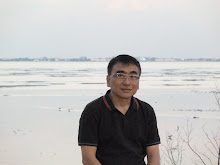I have learnt that, in assessing a Learning Environment, we can either use existing instruments or modify the existing instrument to suit the type of environment to be assessed.
In addition to the instrument used, the assessor would also need to conduct follow-up actions (e.g. interviews, informal conversations, observations and checking-out of documents) after a survey questionaire has been completed, in order for the assessor to find out more about the Learning Environment.
An example of an instrument used is the School Learning Environment (SLE) applied to 3 schools A,B,C to find out about the climate of each of the 3 schools surveyed. My group was tasked to evaluate the findings of School A to determine the following:
1. Profile of School A
2. Teachers' views of School A
3. Profile of the students in School A
From the survey results of school A, the findings were as follows:
What makes the School LE positive?
1. Good discipline observed by students
2. Good collegiality among teachers
3. Principal’s strong leadership
a. Setting clear goals
b. Maintaining orderly environment
c. Emphasising need for frequent evaluation of student progress towards the goals.
d. Strong personal drive and vigour
e. Leading by example (work hard & active in new educational developments)
What makes the School LE negative?
1. Principal’s autocratic leadership styles
a. Lack of staff freedom
b. Lack of participatory decision making
c. High work pressures & stress
d. Over emphasis on academic achievement
e. Participation in too many new initiatives
f. Constraint of space
2. Lack of motivation among Normal course students
Summary
I have learnt to select the appropriate instrument for the type of learning environment being assessed, by applying it on a case study involving a school being researched upon.
In this way, I am better able to conduct an assessment on a learning environment using not only the survey instrument, but also to follow up with interviews, informal conversations, observations and looking up of relevent documents to support my findings.
Tuesday, June 17, 2008
Subscribe to:
Post Comments (Atom)

No comments:
Post a Comment